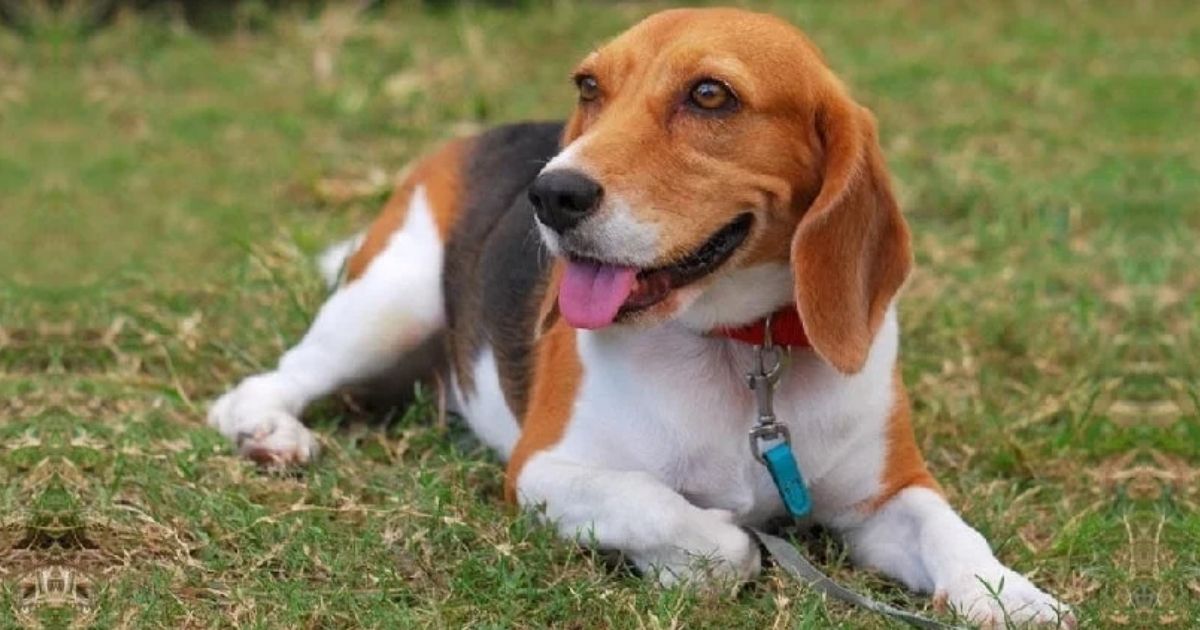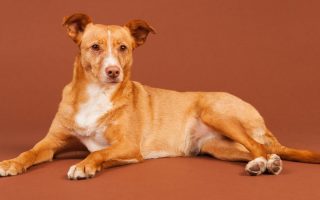Many dogs exist only in history. Others have survived tough times and continue to despite the odds. One such survivor is the Artois Hound.
A European breed who’s an enigma to pet parents in America, the Artois Hound comes with strengths and a few weaknesses.
Even if they were popular, they won’t be suitable for everyone. Some owners are ideal for this breed, and they are capable of meeting his needs.
In the following sections, we would demystify the Artois Hound dog breed information with a look into some key and interesting facts, characteristics, history, personality, temperament, grooming needs, and more.
Key Artois Hound Facts & Information
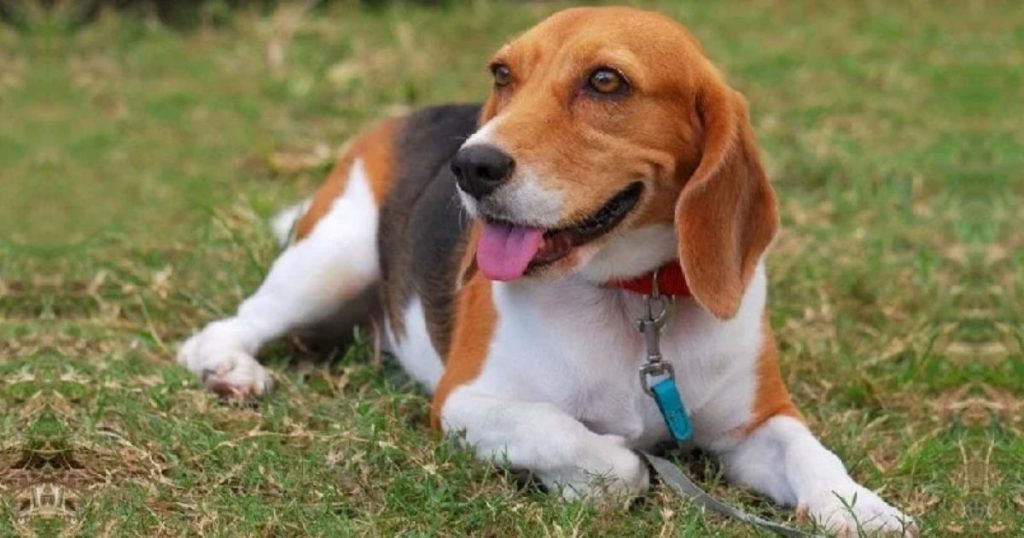
| Dog Breed Group | Scenthound |
| Height | 22 to 23 inches |
| Weight | 55 and 65 pounds |
| Coat | Short, Thick |
| Color(s) | Tri-color |
| Life Expectancy | 12 – 14 years |
| Temperament / Behavior | Loyal, Brave, Calm, Affectionate |
| Origin | France |
| Bred For | Hunting rabbits |
| Nickname(s) / Other Name(s) | Chien d’Artois |
| Recognized By | FCI, UKC |
Artois Hound Characteristics
| Adaptability | Adapt to changes and environment |
| Friendliness | Friendly with family, not so with strangers |
| Kid-Friendly | Get along well with children |
| Pet-Friendly | Good with dogs, but may consider other pets as prey |
| General Health | A healthy breed |
| Grooming Needs | Minimal grooming need |
| Trainability | Training is possible, but not easy |
| Intelligence | An intelligent breed |
| Playfulness | A playful breed |
| Exercise Needs | Needs regular exercise |
| Energy Level | Moderate to high energy level |
| Tendency to Bark | Barks at times |
| Tendency to Drool | Drools sometimes |
| Tendency to Snore | Rarely snores |
| Tendency to Dig | Digs sometimes |
Interesting facts about Artois Hound Dog Breed
Fact #1. There are very few Artois Hounds remaining
The Artois Hound is one of the rarest breeds today, though they have existed for centuries.
There are only about 500 breeds registered today, so the probability of coming across one is low. Hopefully, their number could increase with years.
Fact #2. They were bred to hunt rabbits
Like other hounds, Artois was developed to be a hunter. They specialized in hunting rabbits and carried this out for a long time.
Your rodents will be endangered if you live the Artois Hound around.
Fact #3. They nearly got extinct after World War 2
Artois Hounds once enjoyed significant fame in the 19th century. The first problem they had was the cross-breeding done with some other hounds.
Then, after the second world war, the Artois Hound became an endangered breed. It took the intervention of Mr. Audréchy to save them.
Fact #4. They are not recognized by the American Kennel Club
Though recognized by the Fédération Cynologique Internationale and the United Kennel Club, the Artois Hound has not been recognized by the American Kennel Club. This may be because the breed is rare.
Fact #5. They once rolled with French Nobles
In the 17th and 18th century when the Artois Hound was very popular in France, they became a favorite companion of nobles and accompanied them on hunting expeditions.
History and Origin
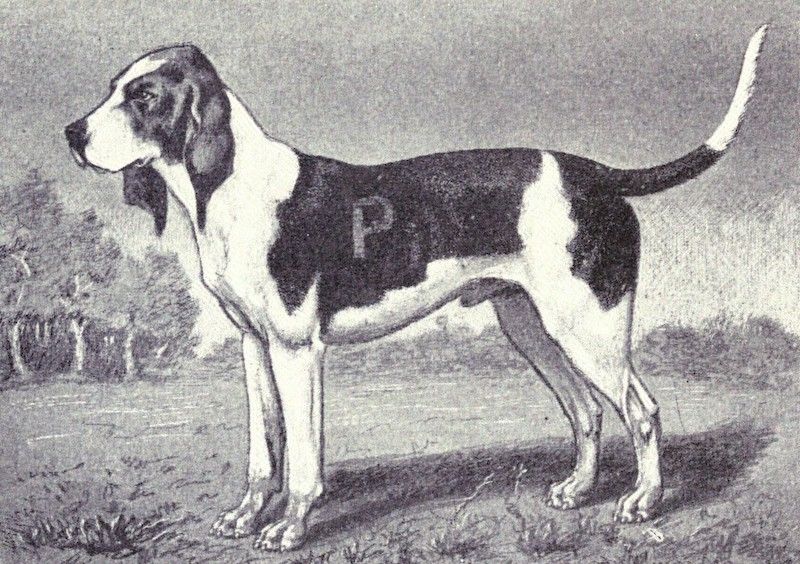
The Artois Hound is a direct descendant of bloodhounds, large scenthounds who hunted boars and bears.
The Artois Hound originated in France and was used as a hunter, especially during the time of Henry IV and Louis XII.
They quickly became popular for being one of the best hunting dogs.
This breed has been around for centuries and is believed to be the ancestor of the Beagle.
The Artois Hound was bred to hunt rabbits and other animals like boars and foxes.
They had both the speed and size to navigate different terrain and capture their intended prey.
They soon became a favorite of the French high class when their popularity soared in the 17th and 18th centuries.
During the aforementioned centuries, the Artois Hound was crossbred with other British Hounds.
The result was the Normand, now extinct. This affected the purity of the Artois Hound. In the 1880s, Ernest Levair and M.
Therouanne worked to restore the Artois Hound to its original form. They aimed to rid the Artois Hound of Norman blood. It took them twenty years to achieve this.
The Second World War dealt a heavy blow on the Artois Hound, and they almost got extinct.
They were saved by a man named Audréchy, but they remain rare today, with only about 500 in existence.
They were recognized by the Fédération Cynologique Internationale (FCI) and later by the United Kennel Club.
The American Kennel Club hasn’t recognized this breed.
Temperament, Behavior and Intelligence
The most vital trait to keep in mind on the Artois Hound is their hunting instinct.
They’ve got a strong prey drive and would go after a picked-up scent with enthusiasm.
No amount of training can rid them completely of their prey drive, so best to take some precautions. They should be on a leash when outdoors, for a start.
As a hunter, the Artois Hound made good use of his stamina and speed. These dogs also barked to alert their owners of prey.
They were known to move in small packs, but have the independence of many hounds.
Though you may not find them in any other place outside France, they play the role of household companions to their French owners.
The Artois Hound isn’t limited to hunting. In a home setting, Artois Hounds are loyal and dedicated to their families.
Their pleasant and playful nature attracts them to everyone, both kids and adults.
An inquisitive dog breed, the Artois Hound ranks high in intelligence and can solve problems. With this strong brain comes a tendency to be independent.
This behavior served him well as a hunter, but may be a downside in a home.
While some may consider the Artois Hound a good watchdog because of his barking ability and loyalty, this breed does a poor job at watching.
They don’t have the territorial instinct that’s necessary to make a good watchdog or even a guard dog.
Is an Artois Hound a good family dog?
A playful breed with a calm disposition, the Artois Hound makes a good family dog. For the few families that have them, the Artois Hound shows enormous devotion to every member of the family.
The bond he creates with his owner is a strong one, making him loyal to the death.
Unfortunately, this is not a dog breed you’d find with your regular breeder.
The chances of you having one in the United States (or any other country besides France) are low.
Are Artois Hounds good with kids?
Artois Hounds co-operate with children and love playing with them. That said, they have limits to how long they can play. They may not appreciate being pushed past that.
Playtime may also turn into a rough session if you don’t take precautionary steps.
You should be around to supervise your kids when they are around an Artois Hound—or any dog.
Busy parents should consider hiring a babysitter. It is better than leaving your kids alone with a dog.
Are Artois Hounds good with other dogs?
Artois Hounds are pack dogs. They get along well with other canines without resorting to aggression. As earlier said, this breed does not get territorial.
They would share their space with other dogs. Some socialization would be necessary, though, to get them accustomed.
Are Artois Hounds good with pets?
They are not suitable for a house with other pets, due to their high prey drive. Even with socialization, you can never be too sure.
Male vs Female Artois Hound
The male Artois Hound is known to be slightly larger when compared to the female Artois Hound. This marks the first, visible difference between both genders.
While they share the same weight range of 55 to 65 pounds, Males are a few inches taller.
Personality is shaped more by individual and environmental factors, but with this breed, a gender pattern emerges.
While this isn’t always the case, male Artois Hounds tend to establish dominance in a home than female Artois Hounds.
This means you may have more difficulties training a male Artois Hound than a female.
Any other possible difference concerns their sexual organs. This is becoming less of a topic these days as more pet parents opt for spaying or neutering their pets.
These are surgical procedures to remove the sexual organs of a dog.
Only on the unneutered and unspayed Artois Hound can we point out the differences in sexual organs.
Overall, one Artois Hound gender can’t be said to be better than the other.
Both come with their advantages and disadvantages, most of which are similar.
Caring for an Artois Hound
Caring for an Artois Hound will require a lot of effort and commitment from you.
Artois Hounds come in both medium and large sizes and have caring needs specific to their size.
Their energy level and hunting qualities should be taken into account too.
The most important needs of an Artois Hound include feeding, exercise, training, socialization, grooming, and good health.
Food and Diet
The Artois Hound needs food rich in nutrients and at a proportion suitable for a big dog.
An Artois Hound can’t cope with a poor meal, and you should be wary of overfeeding them. Overfeeding leads to obesity.
An adult Artois Hound requires around 1 to 1½ cups of food, given twice a day.
Because of their size and body shape, it is best to break the Artois Hound’s daily meal into several portions. It shouldn’t be in one large meal.
The puppy Artois Hound should be fed more than the adult. 3 times a day is recommended, and their diet should be restricted to puppy food.
The best nutrient for the Artois Hound is protein and should cover a good percentage of their diet.
Fat should be of a lesser quantity, and it shouldn’t be from an unhealthy source like junk food. Other good nutrients include:
- Vegetable
- Calcium
- Carbohydrates
Senior Artois Hounds would need to eat enough to sustain their energy but not to make them pile weight. Obesity is more dangerous to an old dog.
Exercise
The Artois Hound needs as much exercise as any other hunting dog breed would need, which is to say, a lot.
They’re active dogs who love having a job. For the owner who’s not a hunter, the Artois Hound should be compensated with exercise.
A minimum of an hour is recommended for this breed. If an hour sounds too much for you, you should look for another breed with a different role.
Many hunting dogs—and worker breeds in general—need a lot of exercise.
Have a game plan before stepping out of the house to avoid repeating a particular activity or underachieving.
A walk is a good activity, but ‘walk’ doesn’t mean a casual trudge to the supermarket.
Walking as an exercise should be intentional, brisk, and long enough to satisfy an Artois Hound.
Another exercise suitable for an Artois Hound is running. While running (and walking too), keep your Artois Hound on a leash as they can get distracted by the scent of prey and bolt after it.
Running can start with light jogs, then graduate to sprints. Alternatively, you could let them run around in a fenced yard or a dog park.
You can also use their hunting instinct to your advantage. Scent trail is an activity that works on both their body and mind.
With this, you get the Artois Hound in search of a particular trail.
Toy plays are good for Artois Hound puppies, who shouldn’t be allowed to partake in vigorous exercise till they grow older.
Artois Hound puppies and seniors will be okay with a little stroll.
Training a hunting dog who’s used to a different way of life is something you should roll your sleeves for.
The Artois Hound has learned to be independent through the years, and that instinct is not going to vanish simply because you said so.
They are pack dogs as well, and in every pack, there should be a leader. Pack leadership is determined by strength, and the most dominant takes the lead.
If your Artois Hound feels he’s the dominant one in the home, he will come after your position.
For these reasons, the Artois Hound isn’t suitable for the new pet parent. They are also unfit for those whose only experiences have been Labrador Retrievers and Pooches.
The Artois Hound needs an owner who’s confident, firm, and doesn’t hide the fact that he’s in charge.
Firmness doesn’t mean you should be harsh on them, though. The Artois Hound has a soft side and will not respond well to harshness and punishments.
These are unadvisable as they would make your pet lose trust.
In the place of harshness, use a firm command or rebuke if they do something wrong. Positive reinforcements will draw their attention and get them to co-operate with you.
Some of the important training an Artois Hound needs are obedience training, socialization, and leash training.
Grooming Needs
Artois Hounds are easy to maintain because of their low grooming needs. It does not take much to make them look clean and proper.
They shed at a moderate level, and more effort should be given to their coat then.
Here are different ways to maintain a dog’s hygiene:
Ear cleaning
The Artois Hound has long, lax ears. The ears easily attract dirt and are prone to ear infections.
Ear hygiene is important to keep your dog’s ears clean and avoid having a vet appointment.
The recommended tools for ear cleaning are a cotton ball and an approved ear cleanser. No other object should get into a dog’s ears, not even a Q-tip.
Bathing
Bathing an Artois Hound is done once in a while, not every day. The Artois Hound should get a bath only when he’s dirty.
Make dog bathing a fun moment as dogs are not used to water on them.
Coat Care
This involves brushing and the occasional hair trimming. The Artois Hound should be brushed once a week, but more when he’s shedding.
A stiff brush is the recommended tool for brushing.
Paws / Nails Trimming
The next part you should take care of is the paws. Artois Hounds like to move around, and long nails put them at risk of injury.
To forestall this, trim their nails before they get too long. Have a sharp nail cutter and trim with care.
Teeth Brushing
Besides ear infections, dental issues like toothache can be avoided with good hygiene.
Take care of your Artois Hound’s teeth through regular brushing with a good brush and approved toothpaste.
Eyes Cleaning
A dog’s eyes accumulate gunks that should be removed with caution. The parts around the eyes need to be cleaned as well.
Common Health Conditions
The Artois Hound is a strong breed with a long life span.
Though not much is known about the health of this breed, it is safe to say they stay healthy most of the time. However, they aren’t sickness-free.
Here are some illnesses you may need to look out for:
Hip dysplasia
This condition affects the hip joint of an affected dog and leads to lameness. Hip dysplasia is caused by an ill-fitting of the femur to the pelvis.
You can tell your dog has hip dysplasia when his movements become abnormal, he winces in pain as he moves, and doesn’t show interest in exercising.
Ear infections
A common problem to long-eared dogs, ear infections come in three forms: otitis externa, media, and the interna.
The last two can render your dog deaf if not treated. The first major symptoms of ear infections are scratching, shaking of the head, and whining.
Anesthesia sensitivity
Sensitivity to anesthesia is a problem when a vet needs to perform surgery on your pet. The less serious symptom is inflammation in the injected area.
More urgent symptoms include cardiovascular issues and anaphylactic shock.
FAQs
Is an Artois Hound right for you?
The Artois Hound isn’t a breed that’s easily found, so the chances of you having one as an American is low.
If you’re able to get your hands on one and can cope with caring for a hunting dog, then the Artois Hound will be right for you.
What are Artois Hounds known for?
Artois Hounds got very popular in the 17th and 18th centuries where they were known to be good hunters. They accompanied french nobles to hunt. After surviving extinction, they serve as companions in France.
How big is a full-grown Artois Hound?
A full-grown Artois Hound is medium to large-sized. These dogs weigh 55 to 65 pounds and grow as tall as 22 to 23 inches.
Do Artois Hounds like to cuddle?
Artois Hounds can cope indoors when you meet their exercise needs. However, they are not lap dogs and may not appreciate cuddling.
Is it hard to take care of an Artois Hound?
The Artois Hound has some challenges like the difficulty to train and exercise. However, these are achievable to the experienced, active owner. Overall, they are not hard to take care of.
How long do Artois Hounds live?
Artois Hounds have a long life span and are not vulnerable to many conditions. They live as long as 12 to 14 years.
How much are Artois Hound Puppies?
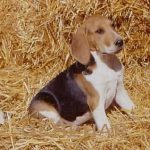
The Artois Hound is seldom found anywhere other than France. You would have a hard time acquiring one. When you do, you’d get them at $1,200 to $1,800.
Do Artois Hounds shed?
Artois Shed shed at a reasonable level. Extra brushing is required during that period, and you may need a vacuum to keep your environment free of dog fur.
What does Artois Hound prey on?
Artois Hounds were bred to be hunters and preyed more on rabbits than other games. That said, they were also used to catch foxes and boars.
Wrap Up
The Artois Hound dog breed has faced extinction once, and with so few of them around, we hope that they don’t fade away in years to come.
They have a lot to offer in and out of a household.
Perhaps there could be ways to increase the numbers of this breed while retaining their formidable qualities.
Related:
Useful Resources:
Official Artois Hound Dog Breed Information and Standards:

